Yesterday I looked at the Biggest Winners from the 2024 NFL Draft, writing about veterans and rookies that gained dynasty value due to events during the draft. Now it's time to look at the other side of the coin, pinpointing players that are less valuable than they were a week ago. Some will seem obvious, others hopefully less so.
Quarterback
The good news? Penix landed in the Top 10, and with a team that has an impressive group of young playmakers. The bad news, of course, is that said team just gave Kirk Cousins a four-year contract that includes $90 million fully guaranteed through two seasons and a $10 million 2026 roster bonus that becomes guaranteed in March 2025. Given the long life span for quarterbacks, this wouldn't bother me too much in dynasty leagues if Penix were a 21-year-old prospect who hadn't done a ton in college and might need a few years to develop anyway, e.g., Trey Lance, Anthony Richardson, J.J. McCarthy.
Penix, however, will turn 24 in May, after attempting 1,685 passes during his college career and topping 4,600 yards in both of his final two seasons. Part of the appeal here was that he'd be pro-ready out of the gate, which meant the team(s) that drafted him — both in real life and fantasy — wouldn't need long to know what they had. While it's possible Cousins gets hurt again or Penix is so good in practice that the Falcons bench their $100 million man, there's also a plausible scenario in which the former Husky doesn't get his big chance until 2026 or even 2027.
Stidham was never going to make it through the draft without any competition, but there was at least a shred of hope it would come from a Day 2 pick rather than Denver's first-round selection. Bo Nix was a five-year collegiate starter and is coming off a 4,508-yard, 45-TD season at Oregon, making him the favorite for the Week 1 nod in Denver even if his physical traits don't quite stack up with those of the other first-round QBs.
 QB Jacoby Brissett
QB Jacoby Brissett QB Sam Darnold
QB Sam Darnold
There was some chance, however slight, that the Patriots and/or Vikings would come out of the first round without drafting a QB. But both ended up doing what was expected, leaving Brissett and Darnold as sitting ducks even if they end up starting Week 1. I think Darnold is slightly more likely than Brissett to play in September, considering Maye is five months older than McCarthy, attempted 33.5 percent more passes in college and was drafted seven spots earlier. Then again, Brissett is probably better than Darnold, so maybe that evens it out.
Running Back
Hubbard survived free agency without any new competition but will now have to share a backfield with 46th overall pick Jonathon Brooks (ACL). The Panthers might also try to salvage something from Miles Sanders, whose contract includes a full guarantee for his $4.02 million base salary this season (but nothing guaranteed beyond 2024). If you were rostering Hubbard in dynasty, the hope was that Carolina would wait until the middle rounds to bring in a new RB. Brooks' rehab from an ACL tear reportedly has gone well, with the former Longhorn suggesting in March that he was on track to have medical clearance by July 1.
The Rams had a boatload of picks and only Evans/Rivers behind Williams, so there was never much question they'd draft at least one RB. The third round was early enough to make Williams' dynasty managers a bit nervous, with Corum being the third RB off the board (83rd overall) after scoring 58 rushing TDs at Michigan. The massive snap shares Williams handled in 2023 are now less likely to persist in 2024 and beyond, though he played well enough last season to ensure his starting job is in no immediate danger.
A modest value downgrade makes sense, which actually might mean Williams is a buy-low target if others are more inclined toward panic. I'm more agnostic when it comes to Corum himself, as this isn't a good situation for immediate value but could eventually lead to a huge payoff if Williams gets injured again. Sean McVay has a long history of directing high-quality offenses that rarely take their lead back off the field — a history that means Williams still has a high-end-RB1 ceiling, and Corum should be an elite handcuff if nothing else.
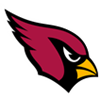 RBs James Conner & Emari Demercado
RBs James Conner & Emari Demercado
This is kind of the same deal as Williams; the Cardinals always figured to draft a running back, but Conner's managers probably hoped it would happen later. Arizona made Trey Benson the second RB selected, coming off the board early in Round 3 at 66th overall. Benson was never a workhorse in college, but he had efficient rushing stats in his two seasons at FSU (154-990-9 and 156-906-14) while adding a bit of receiving production (33 total catches for 371 yards and a TD).
Benson is arguably the cleanest RB prospect from this draft, entering the NFL without any concerns about age (22 in June), size (216 pounds), speed (4.39 40) or health. His presence in Arizona warrants a slight ding to Conner's 2024 volume projection, and it also decreases the chances of JC signing an extension before the start of his contract season.
Demercado, meanwhile, should probably be dropped in the few leagues where he's still rostered, even though he played surprisingly well (and often) as an undrafted rookie last season. He's already 25 years old, and the Benson pick is a pretty strong sign that Arizona brass view Demercado as only a third-down back or special teamer when they have other guys healthy. I only had him rostered in leagues where I have a ton of 2024 picks, so I'd actually said my goodbyes before the draft, anticipating there wouldn't be room on my roster even if things played out in his favor over the weekend (which they didn't).
Wide Receiver
My optimism about QB Anthony Richardson doesn't extend to his pass catchers, as the Colts figure to call a lot of run plays and also will have quite a few dropbacks turn into scrambles. Mitchell could end up being a much better player than Gabe Davis and still only put up the type of numbers Davis had in Buffalo. This isn't a disastrous landing spot, but 52nd overall to Indianapolis is at least mildly disappointing given that there was pre-draft hope for Mitchell to be taken late in Round 1 or early Round 2 by a team like the Bills, Chargers or Chiefs. He instead profiles as a replacement for Alec Pierce, who also lost value over the weekend (though you'd probably already given up on him anyway).
The Panthers seem to have a weird thing for prospects with only one season of noteworthy production, having used early picks on Mingo, Brooks and WR Xavier Legette over the past two drafts (though Dan Morgan replaced Scott Fitterer as GM this winter). In any case, Legette profiles as a better version of Mingo, albeit with elevated bust risk in his own right. A lot of dynasty managers already gave up on Mingo after the brutal rookie year, and it now looks like he may not even get a chance to start again, considering the Panthers still have Adam Thielen and traded for Diontae Johnson. Note that Legette's final-season breakout was an absolute whopper (71-1,255-7) in which he quadrupled the receiving totals of all his South Carolina teammates, whereas Mingo didn't even lead Ole Miss in catches or yards (51-861-5) in 2022.
 WR Keenan Allen
WR Keenan Allen
Things just keep getting worse for Allen, at least from a fantasy standpoint. As recently as January, he had a chance to be the No. 1 receiver in a pass-heavy offense with Justin Herbert at quarterback. Instead, the Chargers hired OC Greg Roman and moved on from both Allen and Mike Williams in March, leaving the 32-year-old in a crowded Chicago passing game with a rookie QB. Caleb Williams might well be a superstar, but the target competition only keeps growing, with the Bears now drafting WR Rome Odunze ninth overall after signing TE Gerald Everett and RB D'Andre Swift.
I'm less worried about DJ Moore because he still has so many years ahead of him and should be around for Williams' prime. For a player of Allen's age, a huge portion of his dynasty value is tied to expectations for the current year... and he's now looking at a scenario where even eight targets per game feels like too high of a projection. He typically saw 9-10 per game with the Chargers, going up to 11.5 last year with Mike Williams injured and the team struggling.
Brown's own performance will be the bigger factor determining his success (or lack thereof) in Kansas City, but there's not really a positive spin on the Chiefs using their first-round pick on another small, fast receiver. Worthy is a different player than Brown — more of a YAC threat and less proven tracking balls downfield — but it's safe to say the Chiefs will want to give the guy with 4.21 speed some deep shots that might otherwise have gone to Hollywood. While the two speed demons might only be on the same team for one year, it's a year that feels make-or-break in terms of how Brown is viewed around the league.
I suppose one could make a similar argument for including Jacksonville's Gabe Davis on this list, but in his case there was so much pre-draft smoke about the Jags drafting a WR — and specifically LSU's Brian Thomas — that I'd already adjusted my volume expectations downward. Plus, the Thomas pick meant Zay Jones was finally released, making playing time a non-issue for Davis.
The Chiefs use a lot more multi-TE looks than the Jags and also have a coach who is more inclined to rotate WRs. For Brown, you start to worry about playing time in addition to the per-route target rate.... especially if Rashee Rice's legal situation moves along slowly and he's able to continue playing without a suspension. Davis, on the other hand, remains a safe bet for upward of 50 snaps and 30 routes per game.
We'll likely see a divide here, with some inclined to downgrade Franklin only a little bit and others inclined to ignore him almost entirely. I fall more in the former camp, as Franklin was always someone I viewed as a "boom-bust" prospect (as much as I hate that term) due to his unusual mix of traits. At 6-2, 176, he's one of the thinnest WR prospects on record, with a 22.6 BMI putting him in soccer/basketball-player range.
On the other hand, Franklin put up 61-891-9 at Oregon when he was 19 years old in 2022 (10.0 YPT) and then 81-1,383-14 as a 20-year-old last season (12.0 YPT), making him one of the youngest and most productive receivers in this draft class. Those are great signs, but we can't ignore that NFL teams obviously are worried about his lack of size and strength — concerns that dropped Franklin to the second pick of the fourth round.
His landing spot is also somewhat divisive, with the benefit of being paired with his college QB (Bo Nix) on a team that doesn't have a clear starter opposite Courtland Sutton. The problems?
A) We don't know if Nix is any good.
B) Sean Payton typically sends a ton of targets to his RBs and likes to rotate his receivers. Those trends date back to his time in New Orleans, and both were even more pronounced last season in Denver, with only Courtland Sutton getting a typical starter's workload at WR. But hey, maybe Franklin or Marvin Mims proves good enough to change that and become a full-time Z receiver, after Jerry Jeudy was unable to break through in 2023.
 WR Jacob Cowing
WR Jacob Cowing
I thought Cowing might sneak into Day 2 of the 2024 Draft, after Tank Dell's rookie season provided a successful comp for a tiny, "overaged" WR prospect with massive college production. No dice, with Cowing instead going late in Round 4, and to a team that had just used its first-round pick to supplement a WR group with three returning starters.
Two of those three starters may end up leaving next offseason (or earlier), but even then Cowing would be looking at sharing an offense with TE George Kittle, RB Christian McCaffrey, WR Ricky Pearsall and either Brandon Aiyuk or Deebo Samuel. The good news is that Kyle Shanahan might be the right guy to maximize Cowing's strengths and hide his deficiencies, though the tough path to playing time does hint at a multi-year roster clogger (whose odds for a payoff in 2026 and beyond aren't all that good).
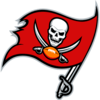 WR Trey Palmer
WR Trey Palmer
The Bucs had bigger needs than WR but nonetheless used their third-round pick (90th overall) on Washington's Jalen McMillan. While that might have more to do with Chris Godwin being in a contract year, it still decreases Palmer's odds of remaining the third receiver in Tampa Bay. Palmer mostly looked like an overmatched sixth-round pick in the role last year, hauling in 57.4 percent of his targets for 9.9 yards per catch (5.7 YPT) while getting PFF's No. 113 grade out of 128 WRs. (Allen Robinson and Marquez Valdes-Scantling were the only WRs with a lower PFF grade on a larger number of snaps.)
Tight End
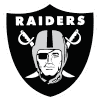 TEs Brock Bowers and Michael Mayer
TEs Brock Bowers and Michael Mayer
Mayer and Bowers were the two most productive tight ends in college football over the past decade, both putting up strong numbers as true freshmen and ultimately topping 2,000 yards over three-year careers before declaring early for their respective drafts. They're now teammates, with Bowers going 13th overall after Mayer was pick No. 35 last year. The Raiders undoubtedly plan to use multi-TE formations a ton, but this is still suboptimal for fantasy purposes, especially in Mayer's case on the heels of a rookie season that yielded just 40 targets on 602 snaps.
It's even worse because the Raiders still have WR Davante Adams projecting for a huge target share and will start either Gardner Minshew or Aidan O'Connell under center. Bowers at least is a rare enough prospect to overcome all these types of concerns; Mayer isn't, even if his superior size keeps him on the field a lot.
All FBS TEs w/ multiple 800+ yard seasons (last 15 years)
+ Brock Bowers
— Scott Barrett (@ScottBarrettDFB) April 26, 2024
+ Michael Mayer
/end of list
 TE Cade Stover
TE Cade Stover
The draft capital (123rd overall) was about what I expected, and Stover's age (24 in June) is less of a concern given his late transition from playing defense and special teams to becoming a tight end. It's also encouraging that he caught 77 passes the past two years while playing alongside a slew of future first-round WRs at OSU, but now he's looking at an even more difficult path to targets with a Texans outfit that just gave Dalton Schultz full guarantees for the first two seasons of a three-year contract. Even the No. 2 TE job is no sure thing, as Brevin Jordan might be a better pass catcher and Teagan Quitoriano a better blocker.
Stover thus shapes up as another roster clogger, i.e., it might take a few years before we have a decent idea about what he can offer, so even if he ends up being useful you'll probably have given up on him before that happens. I'd rather use a late-round rookie pick on a RB dart or a WR/TE with a cleaner path to snaps in Year 1/2.
 TE Zach Ertz
TE Zach Ertz
The chances of Ertz squeaking out another semi-useful fantasy season took a hit when Washington drafted Ben Sinnott in Round 2 last Friday. Not that I was counting on Ertz for anything, but I think it's worth mentioning that the long shot just got longer.





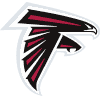 QB
QB  QB
QB  RB
RB  RBs
RBs 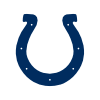 WR
WR  WR
WR 




































